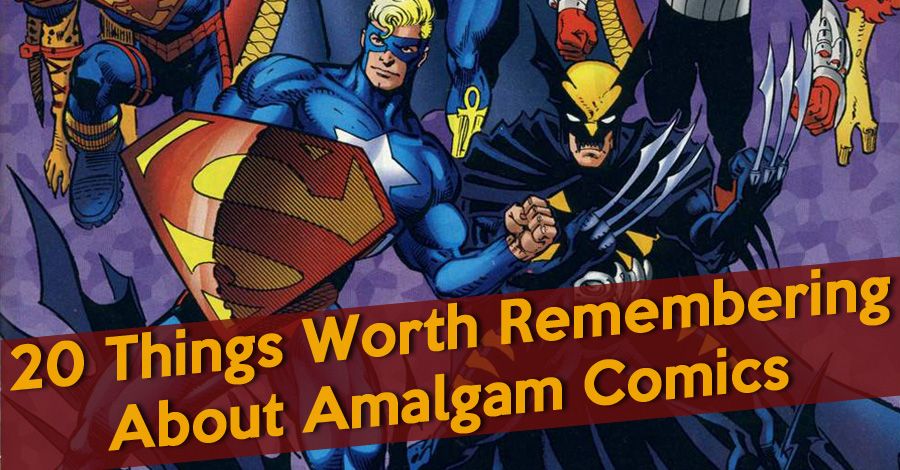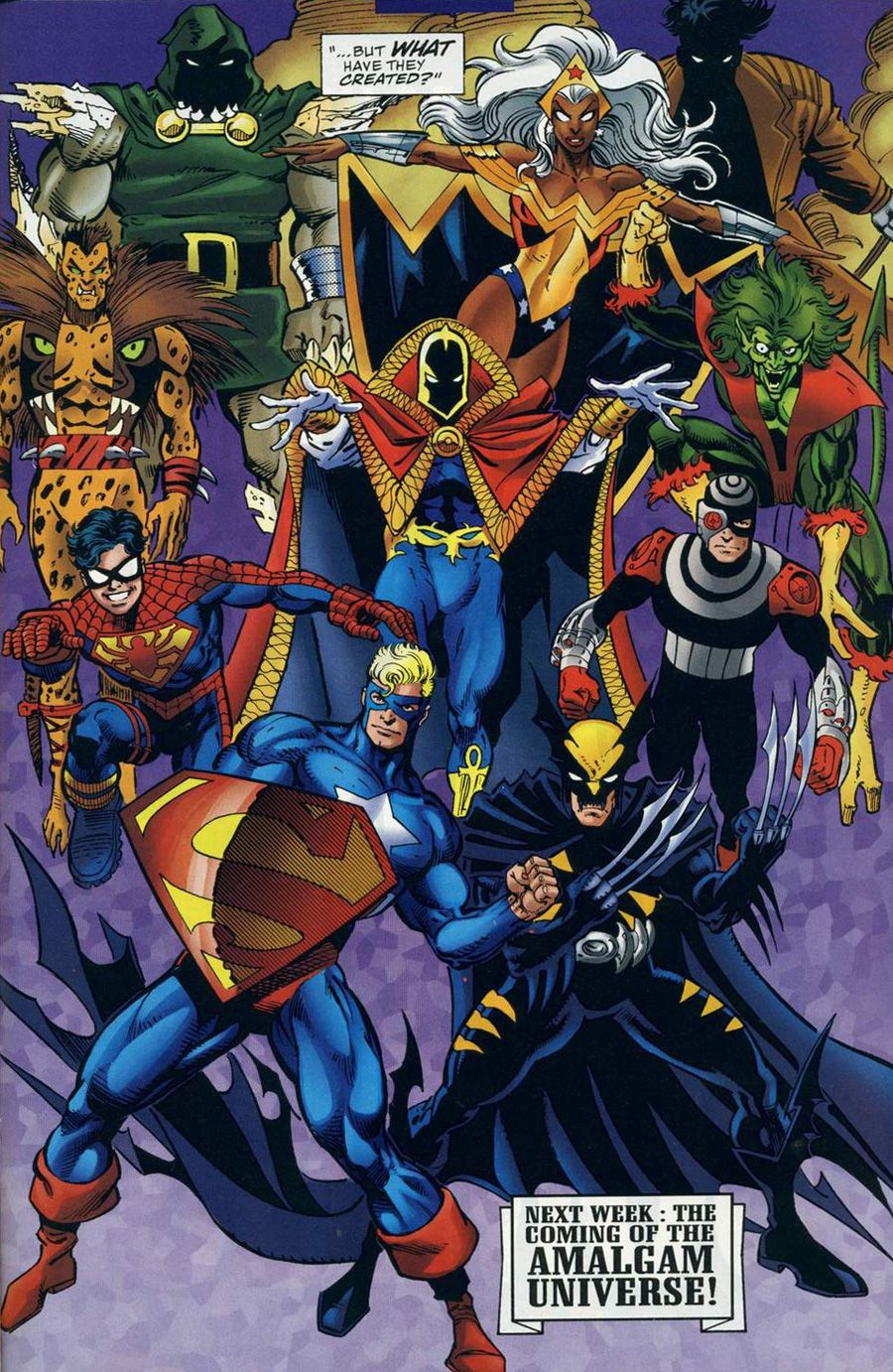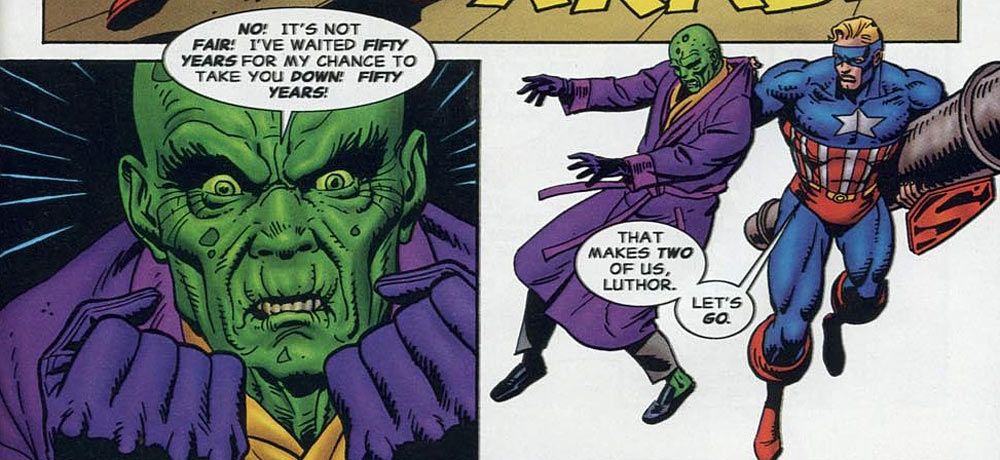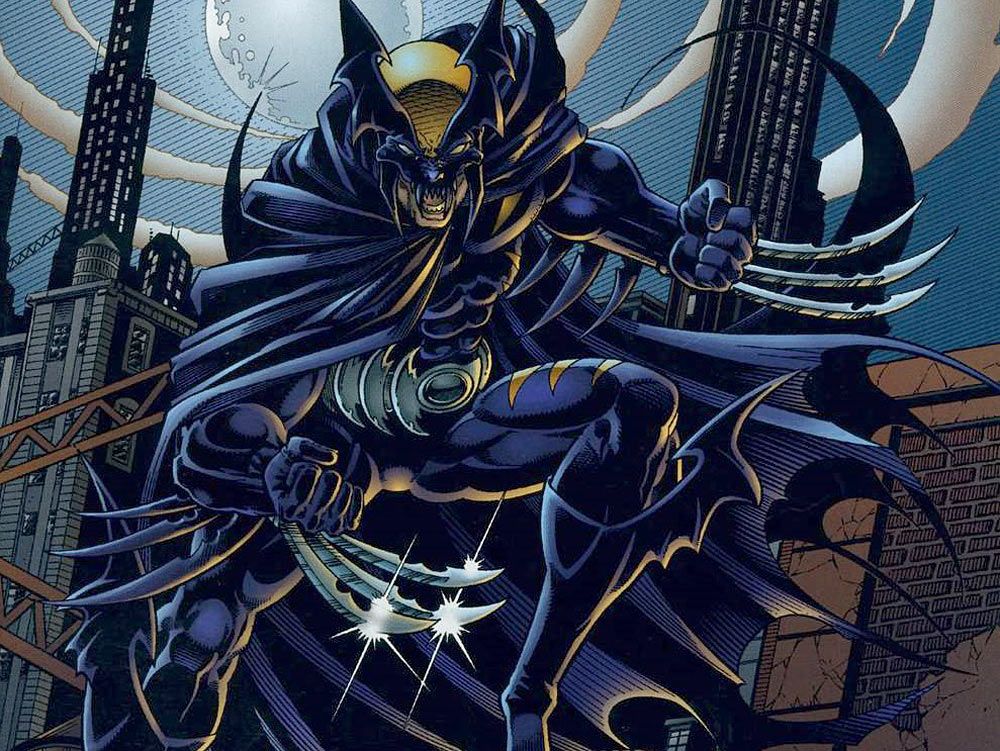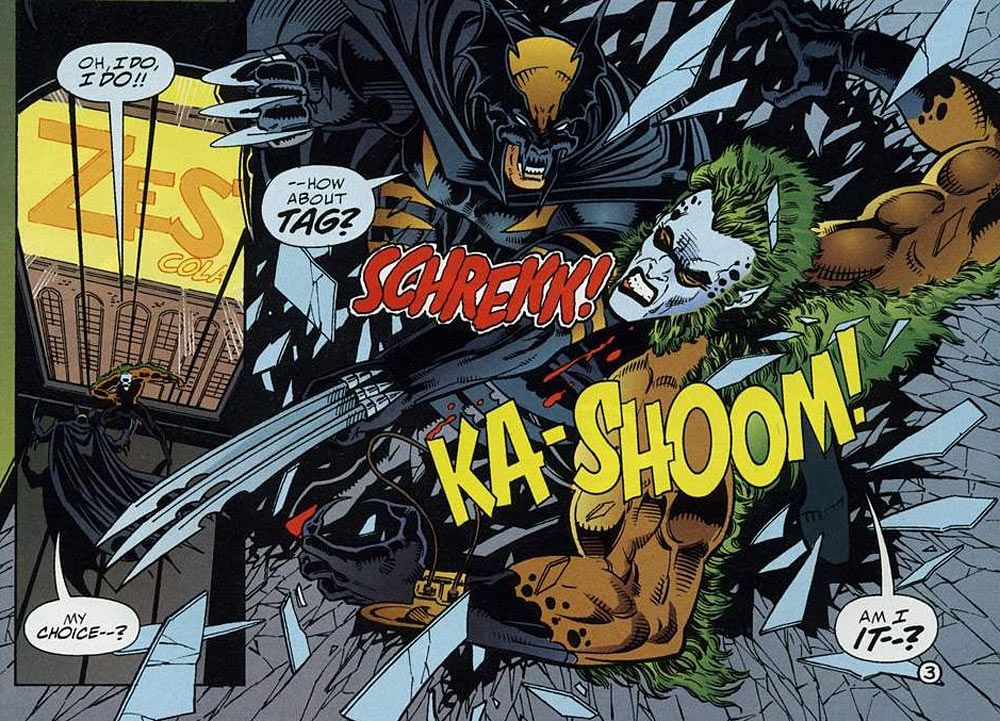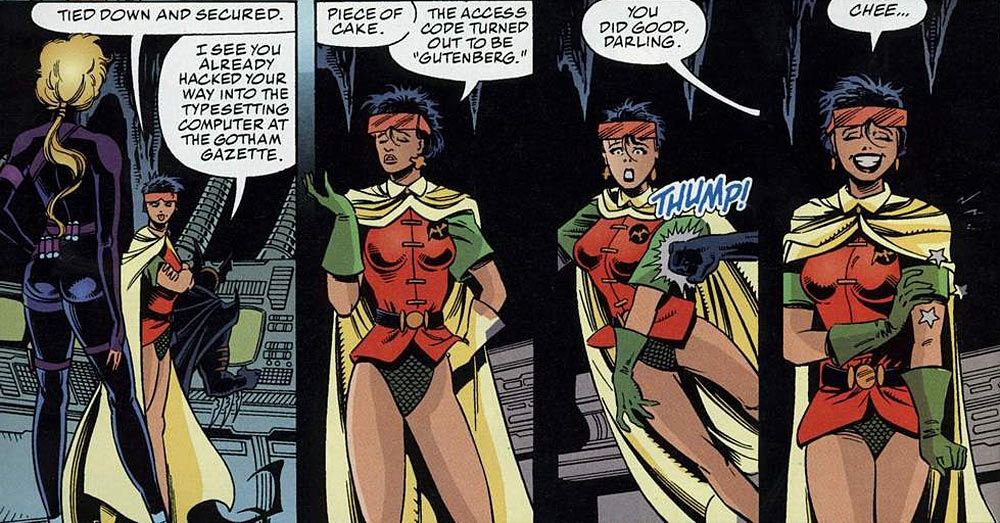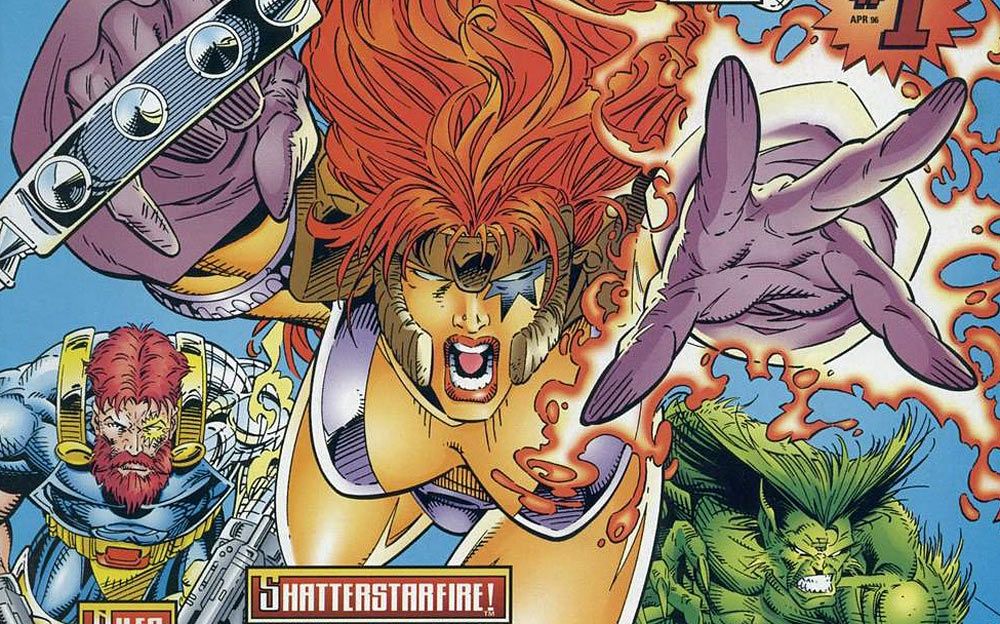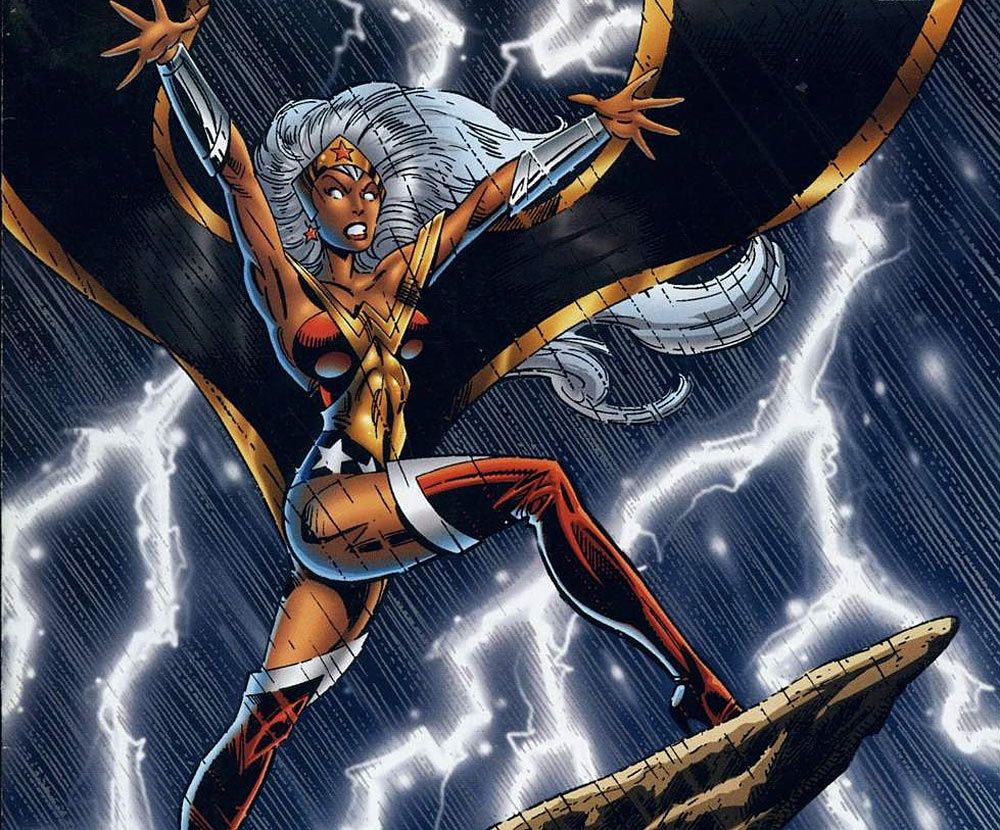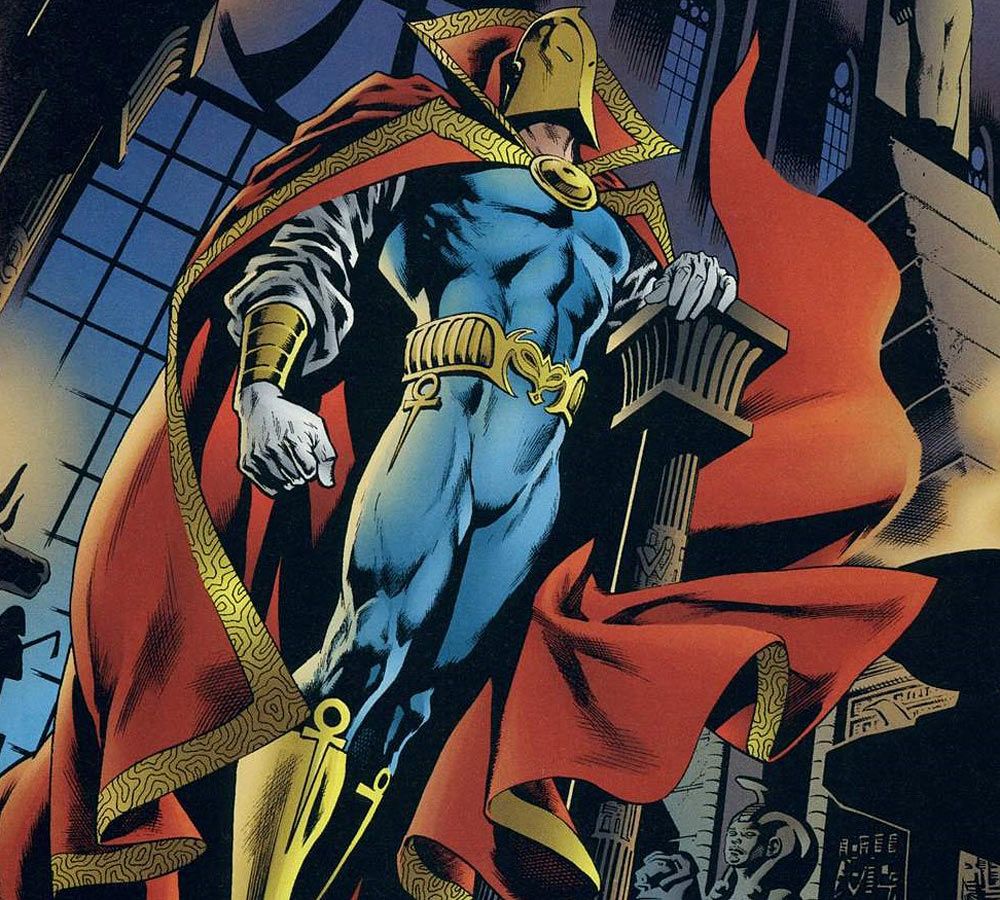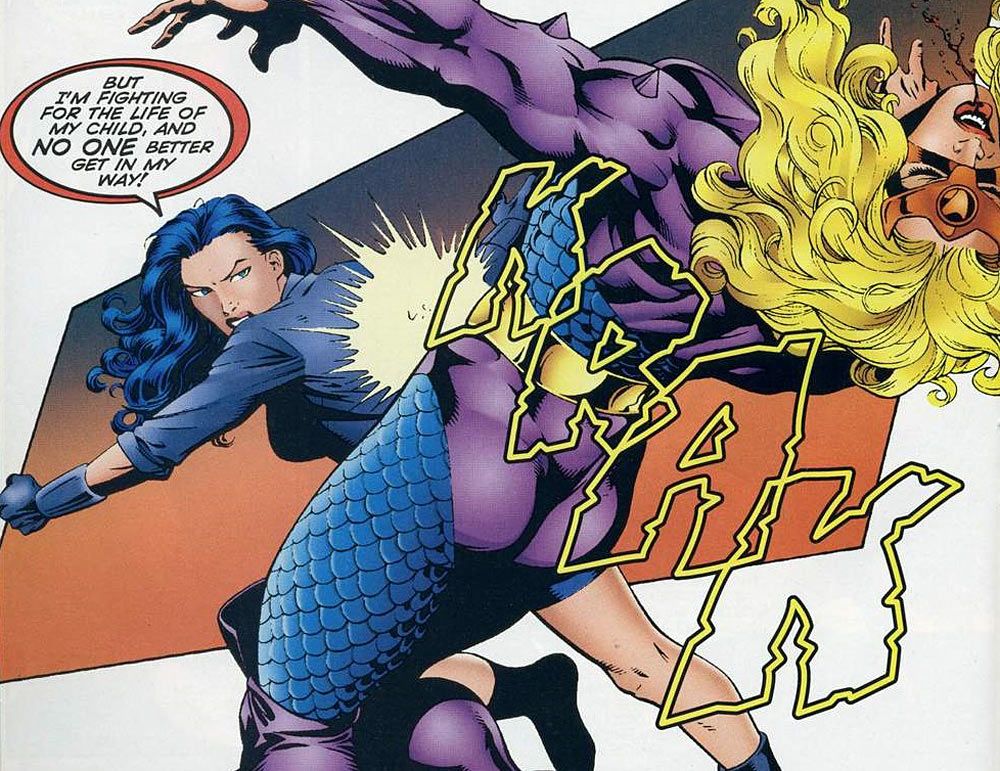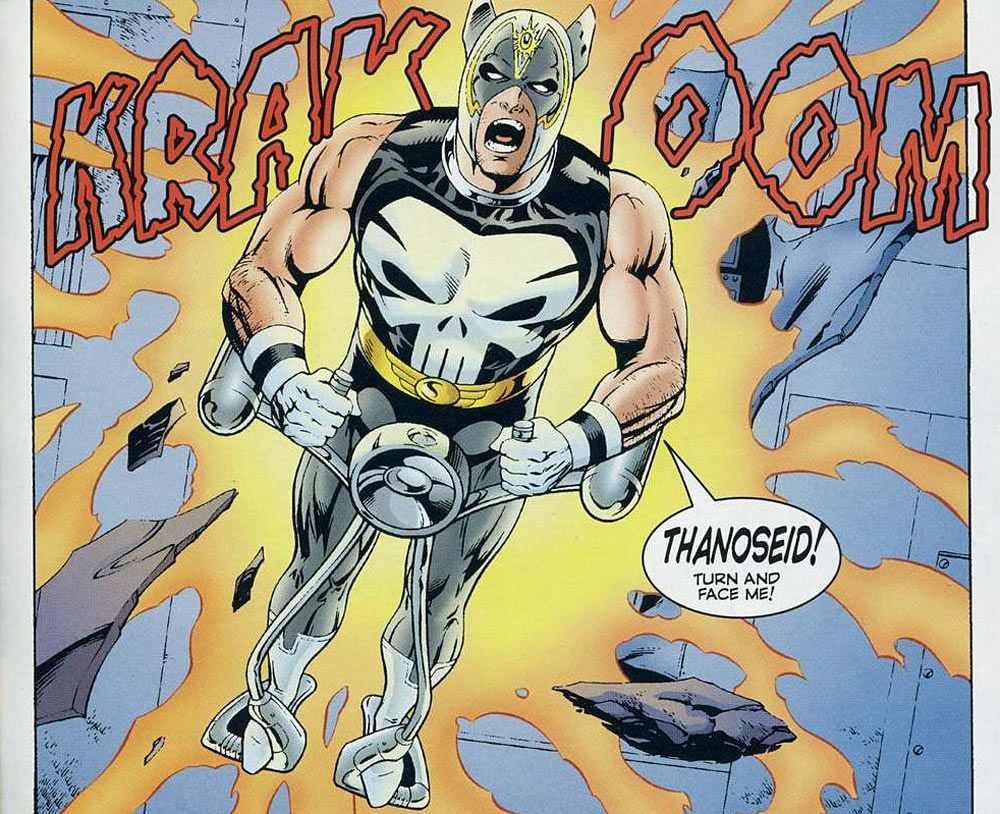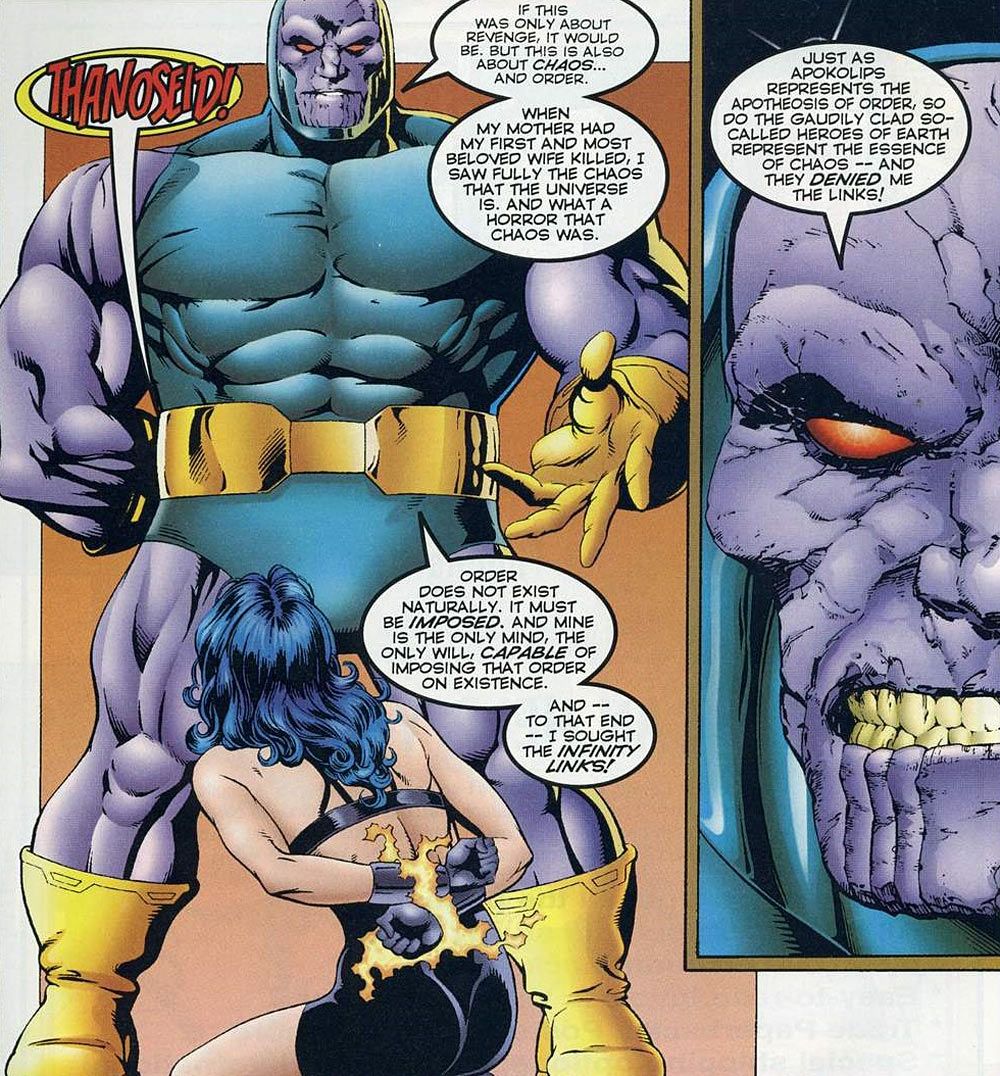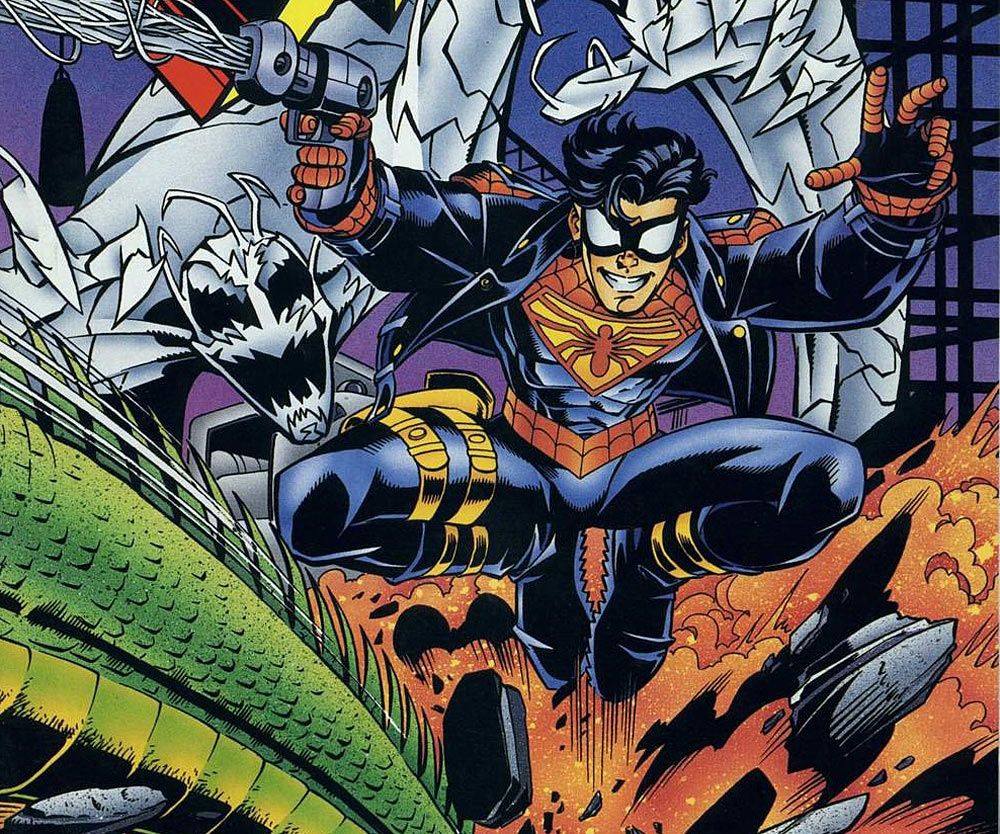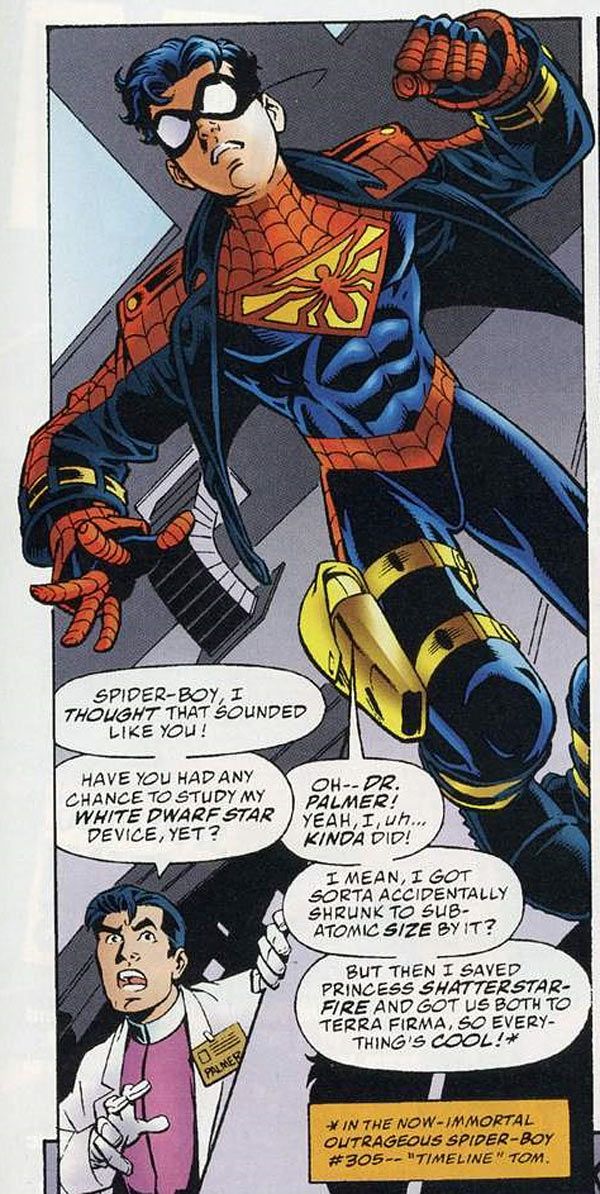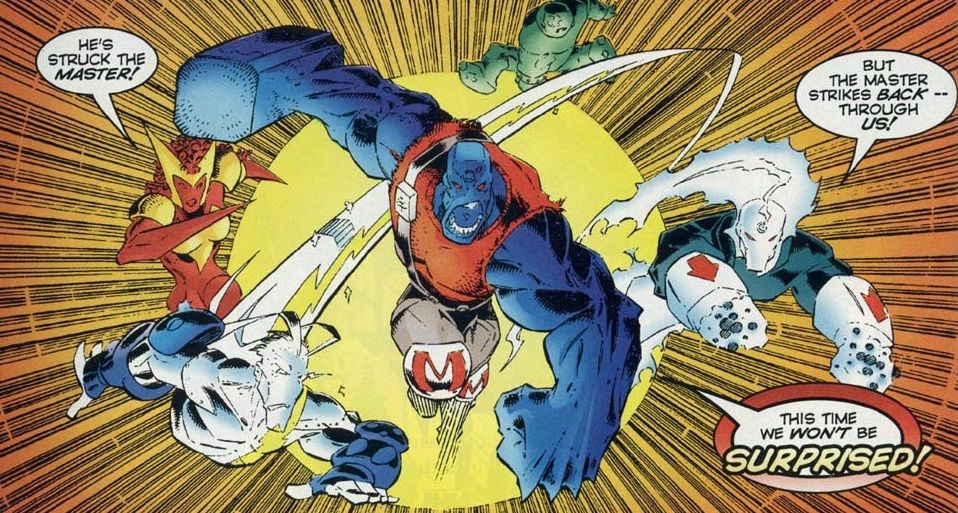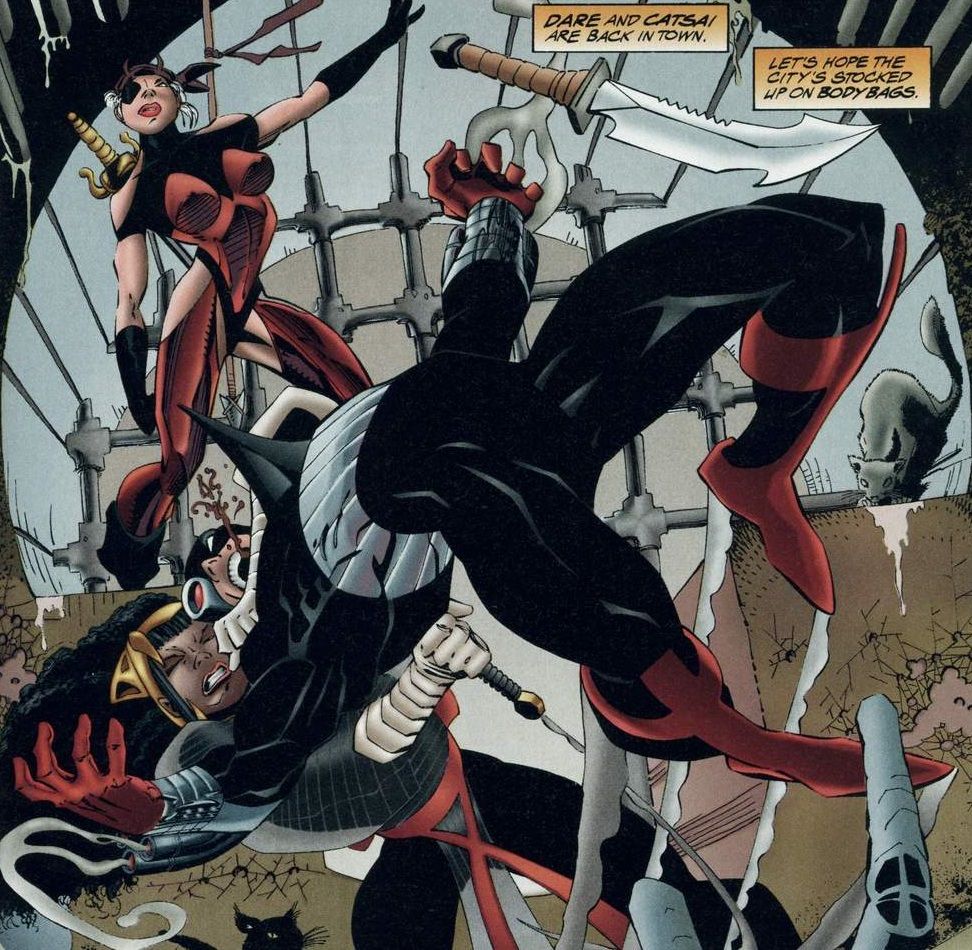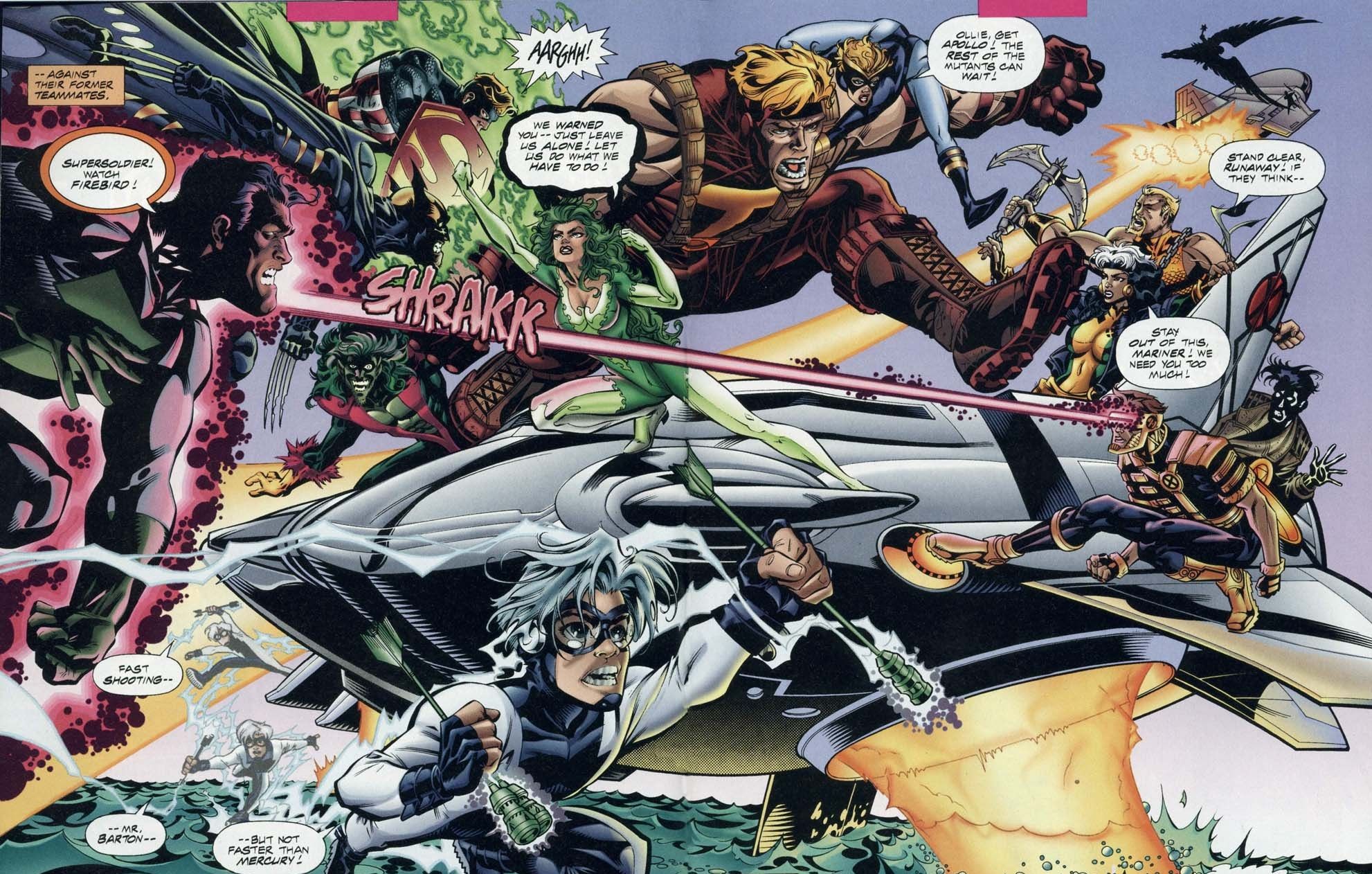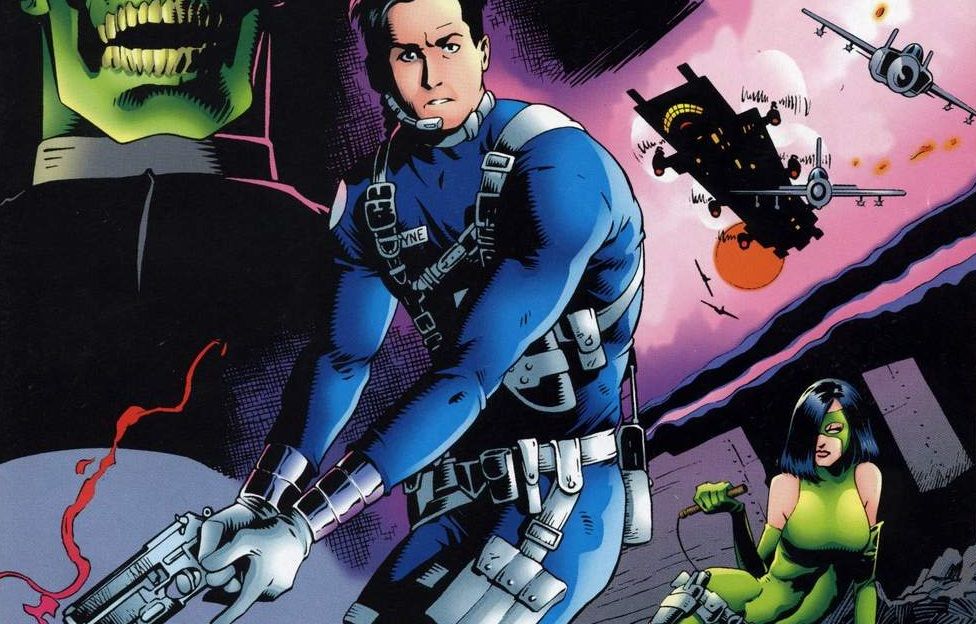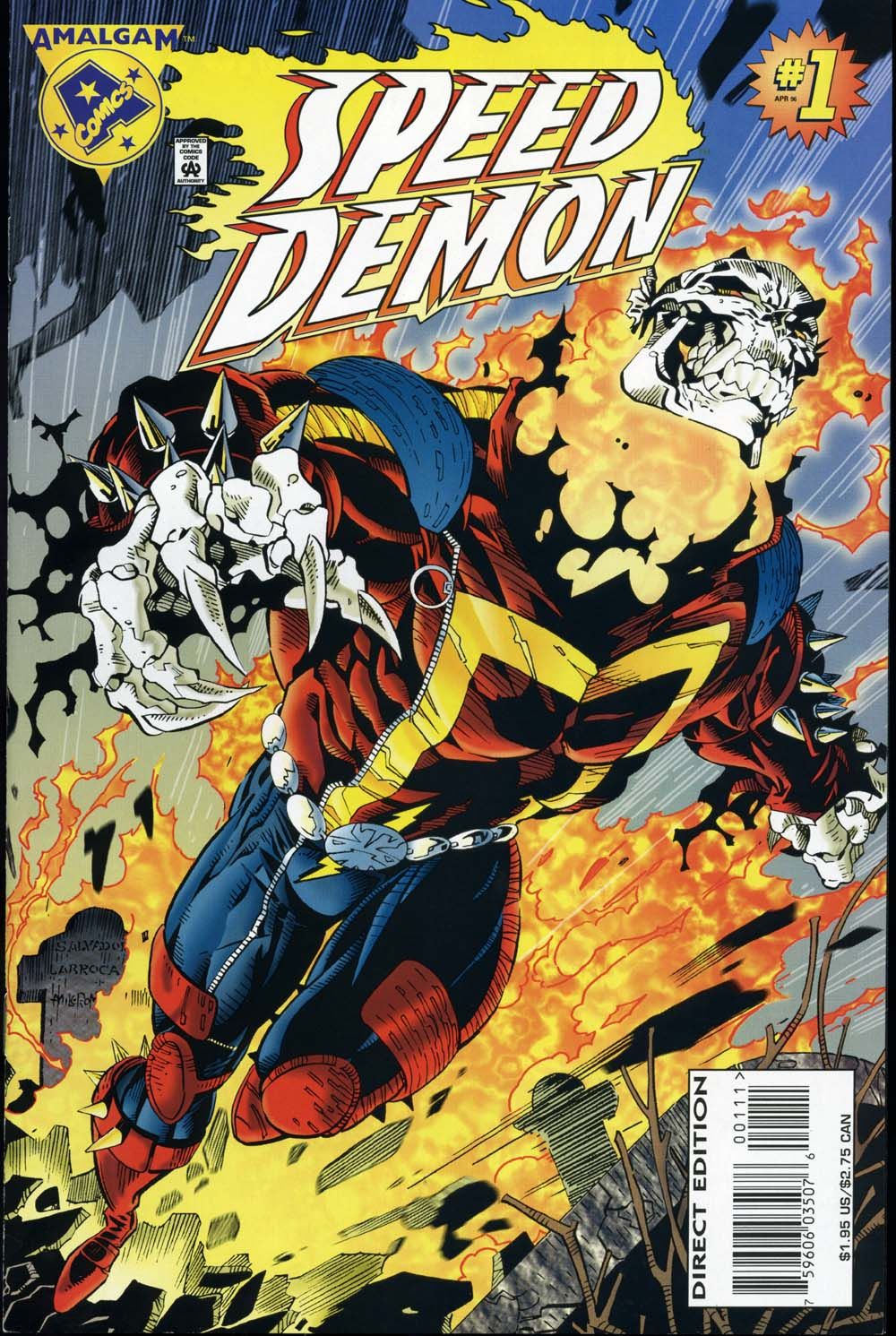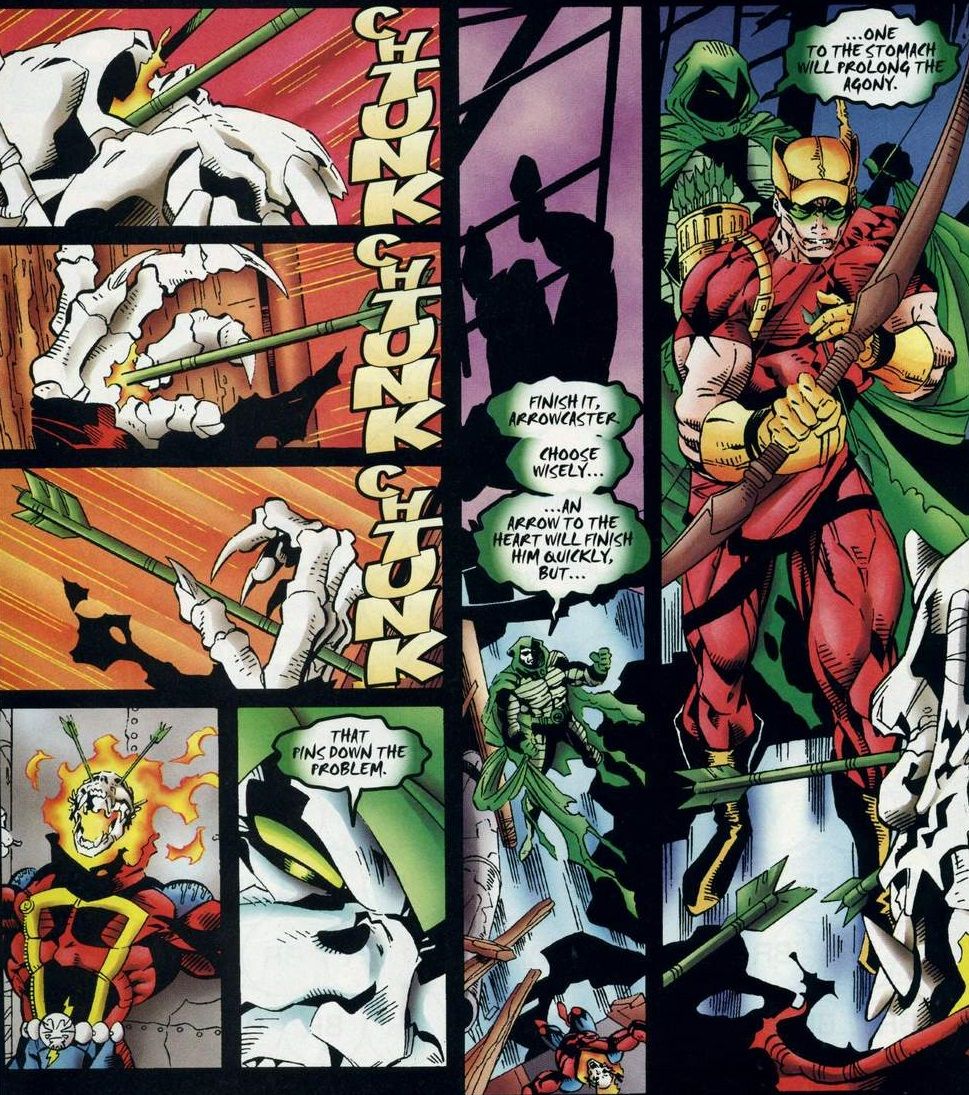Twenty years ago, Marvel and DC Comics entered into a whole new level of intercompany crossover when they produced Amalgam Comics together. DC and Marvel first worked together on a collaborative project in 1975 when they jointly produced a "Wizard of Oz" comic book. Marvel was planning on just doing an adaptation of the original novel while DC had the rights to adapt the film. They decided there probably wasn't a market for two "Wizard of Oz" comics, so they published one together. The project went over well enough that they decided to expand to an even bigger joint project in 1976, "Superman vs. The Amazing Spider-Man." That project went over well, so for the next six years, Marvel and DC did three more intercompany crossovers. However, a planned 1983 "JLA/Avengers" project fell apart amidst a lot of acrimony between the two companies and plans for future crossovers were squelched.
20 Super-Soldier
(Superman and Captain America)
Probably the single best merged character in the entire event was Super-Soldier, by the dream team of Mark Waid and Dave Gibbons. An alien infant crash landed on Earth in 1938, but died on impact. The United States government then used its genetic material to create a Super-Soldier serum that they used on volunteer Clark Kent, who then became the mighty Super-Soldier. Frozen in ice for fifty years, Super-Soldier re-emerged in the present day, fighting for truth, justice and the American way. The "S" symbol on the shield was an excellent touch.
19 Green Skull
(Lex Luthor and the Red Skull)
Waid and Gibbons also nailed the characterization for Super-Soldier's arch-nemesis, Lex Luthor. Luthor was a seemingly patriotic businessman who was secretly trying to prolong World War II to make more money selling munitions. He gave aid to the Nazis to keep the war going. Only Super-Soldier saw through his charade, and for that, Luthor hated him. After injecting himself with a serum based on a mysterious green meteorite, Luthor became essentially immortal, but was disfigured into a green shade of death. Now going by the name Green Skull, Luthor formed Hydra and continued his fight against Super-Solder in modern times.
18 Dark Claw
(Wolverine and Batman)
After seeing his parents murdered in front of him when he was five years-old, Logan Wayne was sent to live with his uncle in Canada, who was then also murdered. After serving in the military, he entered into the Weapon X project, where he was given an adamantium skeleton and claws. After the Weapon X project terminated, Wayne decided to travel the world, learning over a hundred forms of combat and then returned to the United States to fight crime as the vigilante Dark Claw. Then-"Wolverine" writer Larry Hama and "Catwoman" artists Jim Balent and Ray McCarthy were the creative team for "Legends of the Dark Claw."
17 Hyena
(Sabretooth and the Joker)
One of Logan Wayne's buddies in the Royal Canadian Air Force was Creed H. Quinn. He also ended up in the Weapon X program, only the experiments drove him insane. He became the unremorseful killer known as the Hyena, merging the worst attributes of Sabretooth and the Joker -- the strength and savagery of the former and the chaotic and vicious sense of "humor" of the latter.
16 Sparrow
(Jubilee and Robin)
During "DC vs. Marvel," one of the pairings that a lot of fans got a kick out of was seeing Robin and Jubilee interact. This was amusing because Jubilee's most famous outfit (the one she wore when she began to travel the world with Wolverine) was a shorts, shirt and jacket combo that were the same basic colors as Robin's costume. So it was only natural, then, that during Amalgam, Wolverine's sidekick, Sparrow, would be a combination of Jubilee and Robin, only with Jubilee now outright wearing Robin's costume.
15 Shatterstarfire
(Shatterstar and Starfire)
While visually, Jubilee and Robin going together was a no-brainer, name-wise you don't get much clearer than combining Shatterstar and Starfire into Shatterstarfire, a member of the X-Patrol (a combination of X-Force and the Doom Patrol by Barbara Kesel, Karl Kesel, Roger Cruz and Jon Holdredge). Visually, Shatterstarfire also celebrated the great excesses of the 1990s, with the amount of skin, the sword and, of course, headgear and an eye tattoo. Every third X-related character had an eye tattoo in the 1990s.
14 Amazon
(Wonder Woman and Storm)
John Byrne and Terry Austin returned to draw Storm for the first time in over a decade in one of the best Amalgam releases, where Ororo is a young girl who was taken in by the Amazons and raised as Princess Ororo. She then used her mutant abilities as Wonder Woman, leaving the Amazons to travel to Man's World. She became one of the most prominent superheroes in the Amalgam Universe. One of her most notable abilities was to create a "lasso" of lightning that could compel people to tell the truth.
13 Doctor Strangefate
(Doctor Strange and Doctor Fate)
One of the most important figures in the Amalgam Universe, Doctor Strangefate (whose title was written by "DC vs. Marvel" scribe Ron Marz and drawn by Jose Luis Garcia-Lopez and Kevin Nowlan) is one of the few beings who understands that the Amalgam Universe should not exist. He tried to locate and assist Access in fixing things, but failed to do so in his first issue (he ultimately succeeded in the final issue of "Marvel vs. DC". The conclusion of the issue revealed the shocking truth, though, of who was behind the mask of Doctor Strangefate... it was none other than Charles Xavier! Talk about a twist!
12 Diana Prince, Freelance
One of the most charming Amalgam titles was "Bullets and Bracelets" by John Ostrander, Gary Frank and Cam Smith. It stared the separated couple of Amazon Diana Prince (with bracelets made out of Vibranium, given to her in Wakanda) and the Punisher Trevor Castle. They had broken up, but now they were forced to work together again to rescue their kidnapped son, a fight that they were willing to take all the way to Apokolips if they had to do so.
11 Trevor Castle -- the Punisher
(Steve Trevor and The Punisher)
Here's how awesome Trevor Castle was -- when he and his erstwhile wife, Diana Prince, were forced to team up to find their missing son, they ended up on Apokolips. One of John Ostrander's most famous "Suicide Squad" storylines involved the Squad ending up on Apokolips. The sight of humans being thrown into a fight against gods was very compelling and Ostrander nails that tone here, as well, as the Punisher is out of his depths, but remembered that his old friend, Orion, was buried on the planet. So he borrows Orion's gear to come save the day. It's an epic sequence.
10 Thanoseid
(Thanos and Darkseid)
You might have noticed that the Punisher was shouting out "Thanoseid" in the last panel. Yes, Amalgam Comics really did decide to go there. One of the most famous examples of a comic book character being inspired by another one is Jim Starlin's Thanos drawing inspiration from Jack Kirby's Darkseid, and in "Bullets and Bracelets" #1, the two are well-merged (Gary Frank and Cam Smith did a great job on the artwork for this issue). Thanoseid was the one who kidnapped the child of Prince and Castle and seemingly killed the baby in this issue, but, of course, this is the Machiavellian Thanoseid we are talking about here, so things were not quite so simple.
9 "Presented by Stan Schwartz"
One of the coolest things about "Bullets and Bracelets" #1 was that the comic was so fully committed to the concept of "merged" comic book companies that it even merged the introduction box! Marvel Comics became noteworthy in the 1970s through the 1990s of having a quick introduction box at the top of the first page of the comic with a description of the basic setup for the comic in question. It would then end with "Stan Lee Presents...____(whoever)." Well, "Bullets and Bracelets" took that format, only it then merged Stan Lee with famed DC Comics editor (the Father of the Silver Age), Julius Schwartz, to create a unique introduction (for whatever reason none of the other Amalgam comics did anything like this).
8 Spider-Boy
(Superboy and Spider-Man)
When Jack Kirby first pitched the idea for Spider-Man to Stan Lee, his version of Spider-Man had a web gun, as Kirby was importing some ideas he and Joe Simon had had for Archie Comics' Fly character during the 1950s. Well, editor Tom Brevoort and writer Karl Kesel are true students of comic book history, so they made sure to incorporate that lost concept into the Amalgam title that they worked on, Spider-Boy, Kesel had already famously worked a lot of Kirby concepts into his "Superboy" series (bringing over Kirby's Cadmus creations), so combining early Spider-Man with Superboy worked very well.
7 Amalgam Editorial Boxes
One of the fun things that "Spider-Boy" did also was it included a few editorial boxes in them. Editorial boxes were little captions from the editor that comics used to have a lot where a character would reference something that happened in the past and then the editor would include a little note to tell the reader which issue that event took place in, in case readers wanted to go hunt down the issue in question. They have fallen out of fashion in recent years, but they were still used semi-frequently in 1996. The hook here, of course, is that the editorial boxes are all reference to issues that only existed in the Amalgam Universe, so they could just come up with all sorts of crazy old references. Very funny. "JLX" #1 did it a lot, as well.
6 The Magnetic Men
(Magneto and the Metal Men)
In "Magneto and the Magnetic Men" #1 by Gerard Jones, Jeff Matsuda and Art Thibert, Jones deftly tied in Will Magnus (the creator of the Metal Men) with Magneto, who once was called Magnus. So in the Amalgam Universe, he is Erik Magnus, brother of Will Magnus, who created the evil mutant-hunting sentinels. Magneto used his powers and his brother's technology to create robots in the image of and with the personalities of Magneto's ill-fated Brotherhood of Mutants (which led to the awesome pun of having Quicksilver the mutant be Quicksilver the metal).
5 Delayed Revenge
"Assassins" was an odd comic book by D.G. Chichester, Scott McDaniel and Derek Fisher, where Elektra and Catwoman were merged into Catsai, one half of a famous assassin duo. The other half was Dare, who was a merged Daredevil and Deathstrok the Terminator -- although also a woman, for unexplained reasons. "Assassins" was an over-the-top adventure well-suited to Scott McDaniel's dynamic pencils, but perhaps the coolest thing of the first issue is the opening, where Catsai kills Deadeye (a merged Deadshot and Bullseye) in the same way that Bullseye killed Elektra in Frank Miller and Klaus Janson's classic "Daredevil" #181.
4 Mutant Paranoia
An interesting aspect of the merged universe is that even in a merged world, mutants have a hard time. That was the main plot behind "JLX #1 (by Mark Waid, Gerard Jones, Howard Porter and John Dell), where the Judgement League of America was split as the mutant members of the team decided that their teammates were not taking their plight seriously enough, so they broke away from them. "JLX" #1 was probably the most continuity-heavy Amalgam issue, as Jones had the villain of the piece be Will Magnus from his "Magneto and the Magnetic Men" comic and a number of familiar heroes like Super-Soldier and Dark Claw showed up as part of the Judgement League of America.
3 Bruce Wayne, Agent of S.H.I.E.L.D.
(Batman and Nick Fury)
In the Amalgam Universe, Bruce Wayne's parents were spies who were killed when he was a boy. He vowed to carry on the good fight in their honor, joining S.H.I.E.L.D. as its top agent. Chuck Dixon was born to write a comic like this and artists Cary Nord and Mark Pennington did a bang-up job on this rollicking adventure story that saw Lex Luthor's own daughter, Selina Luthor, take over Hydra from him. One of the interesting things in this comic is that Bruce's love interest is Barbara Gordon, the Huntress. This is a reference to Barbara Morse (Mockingbird), who once went by that name. Amusingly enough, though, over in "Legends of the Dark Claw," Carol Danvers showed up... as the Huntress!
2 Speed Demon
(Ghost Rider, Etrigan the Demon and the Flash)
One of the craziest merged characters in all of the Amalgam Universe was Speed Demon (who had his own title by Howard Mackie, James Felder, Salvador Larroca and Al Milgrom). The Speed Demon was obviously a merged Ghost Rider and Etrigan the Demon. So he rhymed like Etrigan and had the flaming skull like Ghost Rider. However, he also was a merged Flash, to boot (he ran fast)! That's three characters merged into one! And his villain was the Green Goblin (a merged Two-Face and Green Goblin), for some reason! None of these characters had anything to do with each other and yet they were thrown together into an awesomely bizarre mixture.
1 Arrowcaster
Arrowcaster stands out among all of the Amalgam characters for one simple reason -- no one is really sure who he is supposed to be merged with! He visually only looks like Speedy and the name is no help (we've seen people claim that it is a character named "Nightcaster," well, tell us who Nightcaster is, then!). We even asked James Felder, and he had no idea either! So really, we love the idea that in a crazy, mixed-up world like Amalgam, some characters are merged that no one even knows! That's kind of awesome.
What did you like best about Amalgam Comics? Let us know in the comments!

